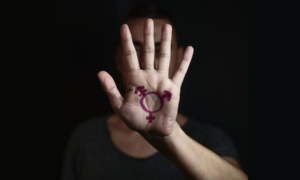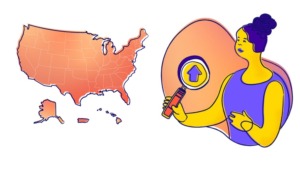[Correction: Because of an editing error, a sidebar story to November’s “Tale of Two Reforms,” titled “Discontent on DMC,” referred to a visit to Ramsey County, Minn., by James Bell, executive director of the W. Haywood Burns Institute. That visit included staff members of the Burns Institute, but not Bell.]
If you could look at all the faces of youth who are arrested, detained and incarcerated as adults in this country, you would never know that, for decades, a federal agency and two major foundations had been trying to lower the proportion of those faces that are black or brown.
The history of disproportionate minority contact (DMC) is replete with studies, training sessions and commitment to change, but little evidence that anyone can effect it.
Pronouncements from the U.S. Office of Juvenile Justice and Delinquency Prevention began two decades ago; the Annie E. Casey Foundation signed on in 1993, and the John D. and Catherine T. MacArthur Foundation joined the cause in 2004.
But at no time has there been a single declaration that minority youth were being treated the same as whites in a single juvenile justice system.
Since 1992, OJJDP has made addressing DMC one of the core requirements for receiving state formula grants.
But state action plans, and compliance, have amounted to little more than more studies of the problem, or training sessions on the issues.
James Bell of the W. Haywood Burns Institute, which works on DMC for both the MacArthur and Casey foundations’ juvenile projects, says OJJDP’s requirements are too easy to meet. “It says you must address DMC. … You could drive 18 tankers through that,” Bell says.
JDAI requires all of its sites to address DMC issues affecting admission to detention. Asked to cite a success story, Casey’s Bart Lubow mentions Cook County (Chicago is the county seat), which reduced by 300 the number of youths in detention on any given day. Before JDAI, the detention population was virtually all minority; it still is.
Is that an improvement, if the mission is to change proportionality? Yes, says Mark Soler, whose Center for Children’s Law and Policy does DMC work for both JDAI and Models for Change, because the proportion of minority youth detained by judges and intake staff (as a percentage of the total youth minority population) had to have declined.
In some cities, Soler, the executive director, explains, “you have a high percentage of the general population that is people of color. It’s not likely you’ll be able to change the amount of representation.”
True. But Cook County’s total under-18 population is about 40 percent white, and the average daily population of the detention center is 3.3 percent white.
Some in juvenile justice are dismayed that Soler and Bell, the faces of DMC work for their respective sites, haven’t been more aggressive in tackling DMC. One person was particularly critical of Burns’ approach in her community.
“I am still interested in seeing concrete evidence of [the institute’s] success in reducing DMC,” says Sarah Walker, who chairs JDAI’s DMC project in Ramsey County, Minn. “They are touted as leaders in addressing DMC, but they have little to nothing to show for it for a considerable price tag.”
Walker recalls Burns Institute’s visit to Ramsey County as a pep talk that, in essence, placed solving DMC on the community.
“Community members are enthusiastic to hear two black men [Bell’s staffers] give a rousing call to action, but there [was] no substantive plan for community action and engagement,” Walker wrote in an e-mail. “It seems rather obvious to me that if the community had the resource[s], organizing capacity and connections to tackle DMC, it would have already been done.”
Despite Bell’s and Soler’s long history of fighting DMC, Walker is not alone in wondering if anything DMC-related is really working.
In New Mexico, Bernalillo County researcher Nicol Moreland believes the DMC issue has been studied “to death.” But she is unsure if there is a real commitment to change, which would, in essence, require admitting that some actions in the past have been racist.





























